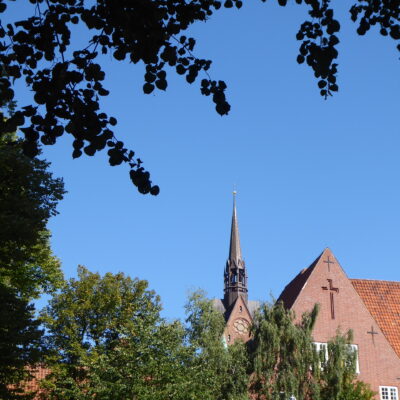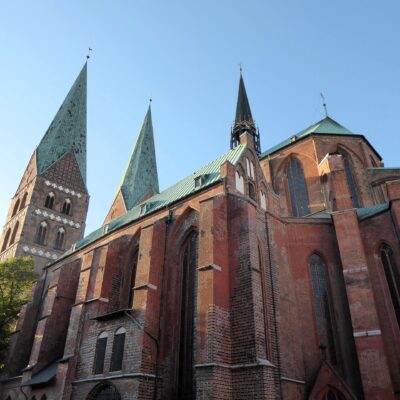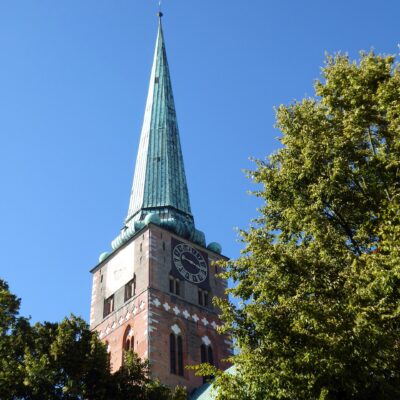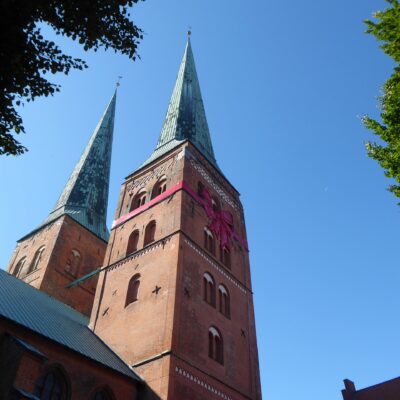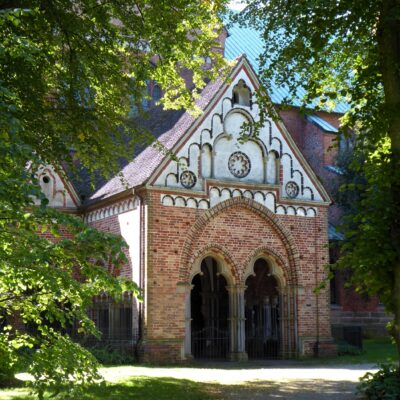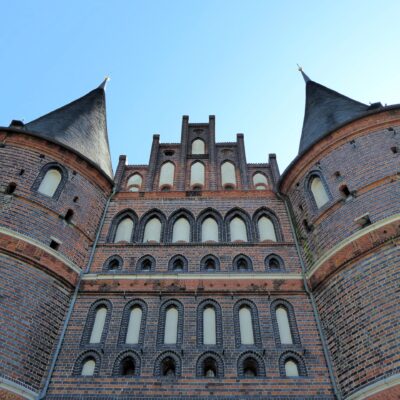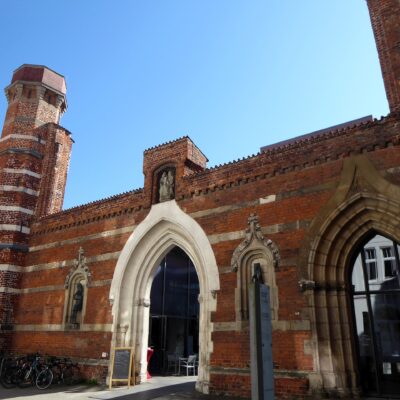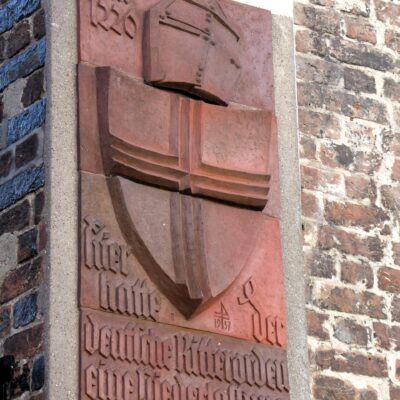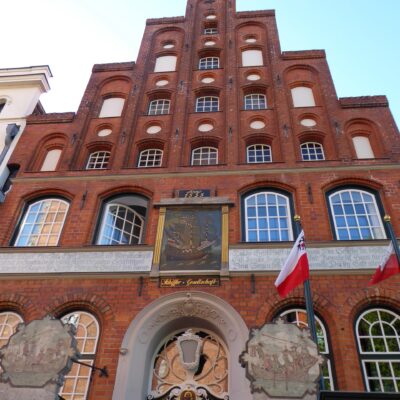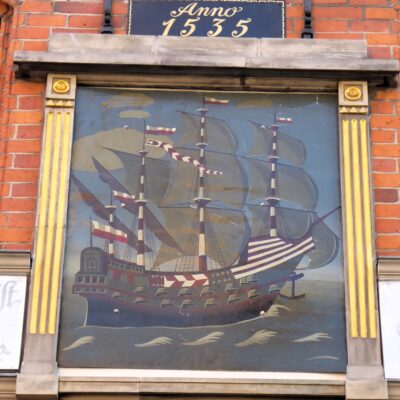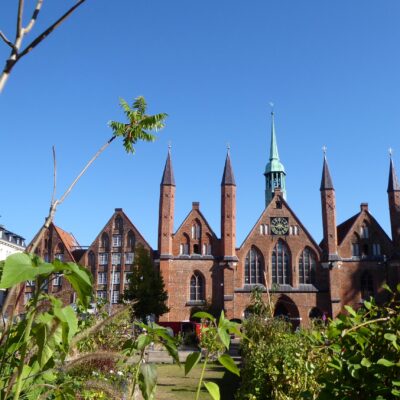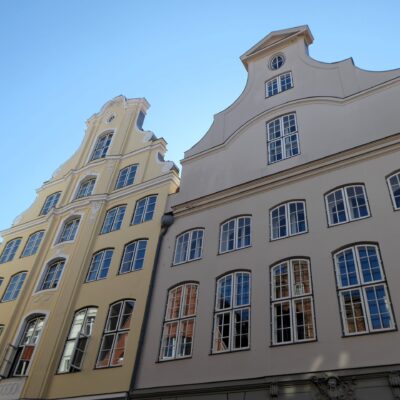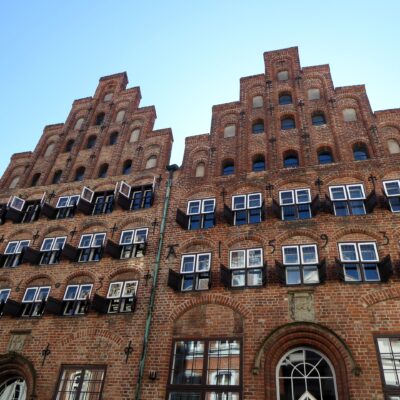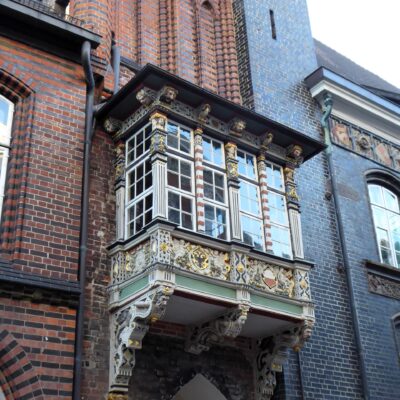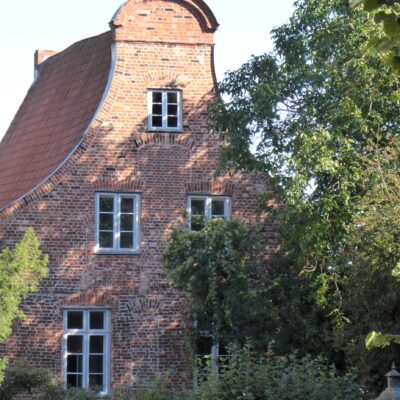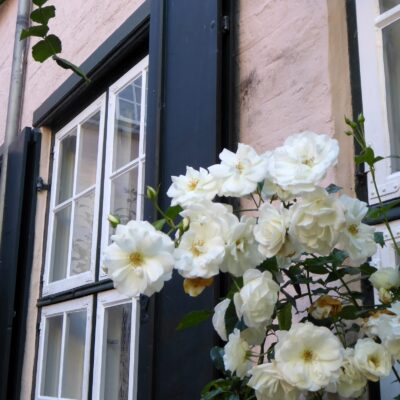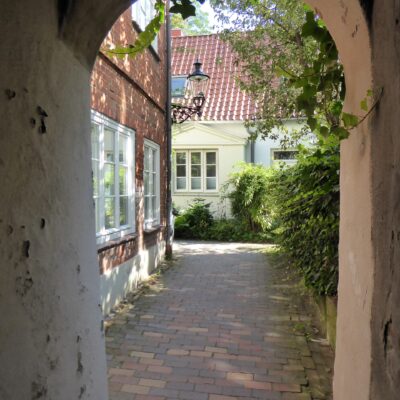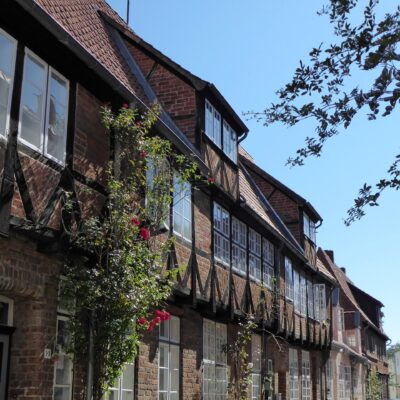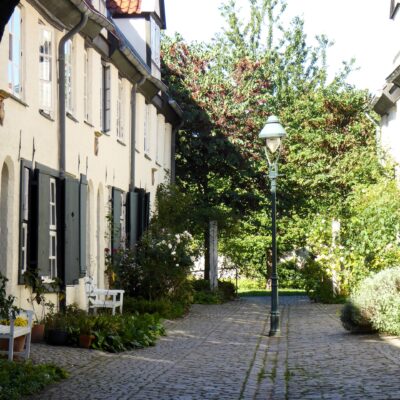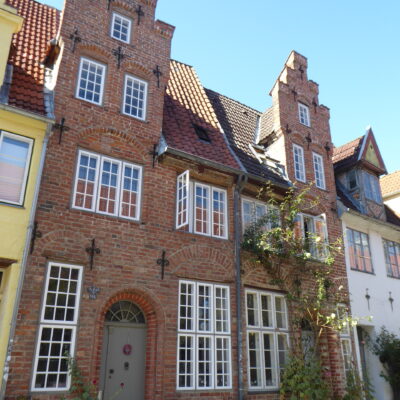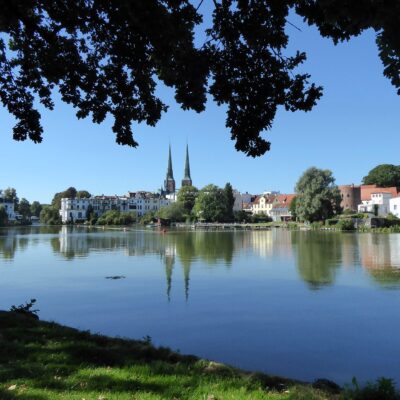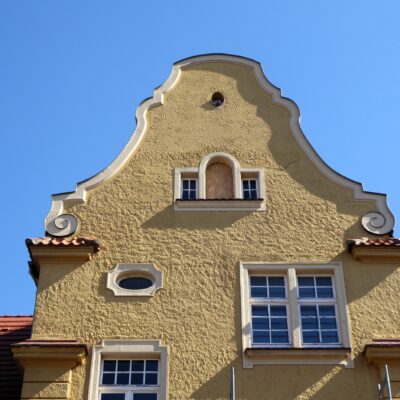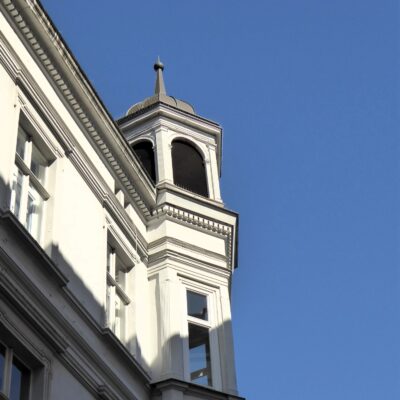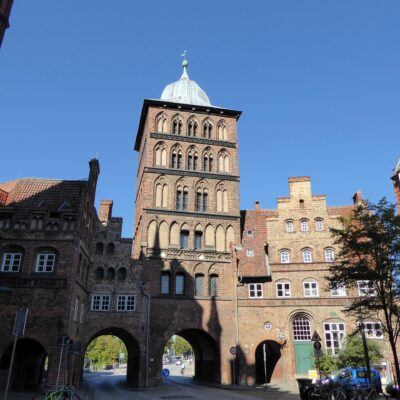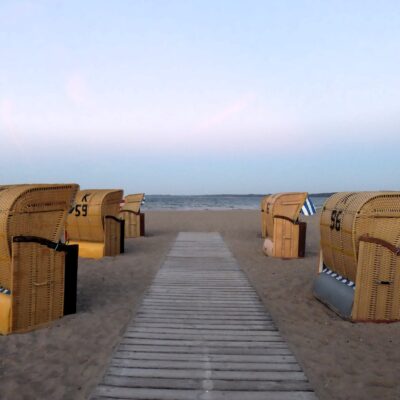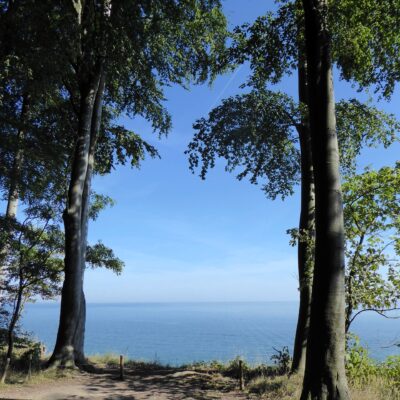My verdict on Lübeck: Easily one of the loveliest German cities I have ever visited.
Lübeck was a key-player in medieval and early modern commercial life and generally considered head of the Hanseatic League. If you are expecting something boring, industrious now, think again. Lübeck’s pretty architecture is a splendid example of money well spent. Read on to find out why it is also a World Heritage Site.
Lübeck is categorized as a large city based on the number of inhabitants; however, it does not feel like a large city to me at all, but much more accessible and laid back. The city is located within the Lübeck Bay (Lübecker Bucht) in the southwestern corner of the Baltic Sea, approximately 70 km northeast of Hamburg, which visitors from abroad may be able to place more easily in their mind’s map. Due to the many church towers, the city is known as the “City of the Seven Towers”. You may be surprised to learn that until the completion of Cologne Cathedral in 1880, St. Mary’s was the tallest two-towered church, and still holds the record for the tallest brick vault in the world.
- View towards Propsteikirche Herz Jesu
- St. Mary’s
- St. Jacob’s
- Lübeck Cathedral Towers
- Exterior Chapel at Lübeck Cathedral
Stepping off the train tired, grumpy and hungry after crossing the length of Germany from South to North, I was greeted with a friendly northern Moin (= Hello), which immediately made me smile. Many people in Germany love and use this greeting nowadays, but it just isn’t the same as when you hear it in a location and accent it belongs. And even though I visited Lübeck for work, this friendly Moin put me into holiday mood in an instant.
The historic city centre that forms the World Heritage Site is not situated by the beach, alas. It has a rather splendid spot on an island between the river Trave and the Trave canal, though, and the beach is still close enough. (More on that later.)
Much of the historic centre remains intact despite some bomb damage during WW II, and walking through, you can easily imagine what it must have looked like a couple of hundred years ago, when Lübeck was the queen of the Hanseatic League.
- Holsten Gate Close-up
- Museum Quarter
- Sign indicating former Site of Teutonic Order Branch
- Schiffergesellschaft
- Schiffergesellschaft Detail
The Hanseatic League was a confederation of different trading companies, and later even whole merchant cities, between the 13th and 17th centuries. Its aim was to foster promising-looking trade relations and maximize the members’ profits. Such was the economic power that the League had massive impact on political issues, not only during actual trade wars, but also regarding allegiances and financial sponsoring during other conflicts. Money makes the world go around, I suppose.
The Hanseatic League stretched over a vast area, from Belgium and the Netherlands in the West to the Baltic States and Russia in the East. It not only comprised of cities on the coast, but included important trading settlements much further inland, as well. Additionally, trading posts, so-called Kontors, were built in other important trading locations such as London, for example. The League held a monopoly over trade in the North Sea and the Baltic Sea and was powerful enough to negotiate beneficial conditions (such as waivers on customs duties) or instigate blockades if they did not get their way. The profits made seem positively astronomical, and many a pretty historical town centre bears witness to that wealth.
This is only a rudimentary overview of course, but then I’m not writing a treatise on the Hanseatic League but only providing some background to explain the importance of commerce on the city of Lübeck and its cultural heritage.
So, talking about pretty towns built with Hanseatic merchants’ profits… Here are some of my favourite corners:
- Hospital of the Holy Spirit
- Townhouse Facade
- Townhouse Facade
- Oriel on Lübeck Townhall Building
- Townhouse Facade
Apart from Lübeck being a lovely town, why should you visit and why is it a World Heritage Site?
Lübeck’s location made it a perfect spot for trade in several directions: north towards the Scandinavian countries, East towards the Baltic States and Northern Russia (plus the Oriental trade routes via Russia) and west towards the North Sea and the countries of Western Europe. Lübeck was also a safe city and was, therefore, an attractive location for foreign merchants. Lübeck was regularly confirmed as head of the Hanseatic League and also seat of the court of appeals for the League.
The commercially driven, medieval layout of the city centre is still clearly visible and one of the reasons of Lübeck’s inscription on the World Heritage list:
“The plan of the Old Town island of Lübeck, with its blade-like outline determined by two parallel routes of traffic running along the crest of the island, dates back to the beginnings of the city and attests to its expansion as a commercial centre of Northern Europe. To the west, the richest quarters with the trading houses and the homes of the rich merchants are located, and to the east, small commerces and artisans. The very strict socio-economic organization emerges through the singular disposition of the Buden, small workshops set in the back courtyards of the rich hares, to which access was provided through a narrow network of alleyways (Gänge).”
From: https://whc.unesco.org/en/list/272
The large and elaborately built town houses are beautiful and impressive, of course, but I think I like the little houses in the alleyways even more. Among those, you often get a really calm, cottage-y or small village vibe much more than a sense of being in a city. Despite being tucked between and behind the larger houses, they do not appear squashed in, dark or dingy. The actual alleyways between and underneath the houses on the front are mostly very narrow, I admit, but they usually open up into light-filled spaces with small gardens, hidden away from the hustle and bustle of the city.
- Flowers in Backyard
- Alleyway towards Backalley Houses
- Halftimbered House
- Bee on Blossom
- View towards Calm Backyard
Another aspect that I really enjoyed is the walkability. With the historic city centre being located on a smallish island, everything is in easy walking distance. As I was visiting for work, I did not have a lot of time to spend sightseeing and yet managed to take in the whole World Heritage Site with no rush at all. There are many tasty cafes and restaurants, the usual shops as well as many independent ones, plus a lot of green spaces and of course the river and the canal. I imagine that Lübeck must be a very pleasant place to live, with the historic centre offering both a sense of heritage and all sorts of modern amenities, plus easy access to leisure activities on the water and relaxing parks.
- Townhouse Facade
- View across Krähenteich
- Townhouse Facade
- Pretty Oriel on Townhouse
- Castle Gate
Lübeck is easily accessible by train or car from nearby Hamburg, for example.
I would definitely recommend adding some extra time to a trip to more well-known Hamburg to allow for a detour to Lübeck. If you’ve got a lot of time on your hands, consider combining this with some refreshing time at a beach resort on the Baltic coast. Travemünde, for example, is a suburb of Lübeck and a short train ride provides easy access to a walk on the beach, a dip in the sea, chilling in a traditional Strandkorb (a huge wicker chair providing shade) or all of the above. You could also choose any of the other beloved resort towns along the coast of course, which aren’t that much further away.
- Sunset on the Baltic Coast
- Young Seagull at Travemünde Beach
- Travemünde Beach
- View from Coast Path near Travemünde
Don’t miss out on the city of Lübeck and its surroundings. You’ll find the perfect blend of urban charm, historical background, easy-going hospitality and relaxing leisure options.
(I’m not being sponsored, I promise. I just love it there.)

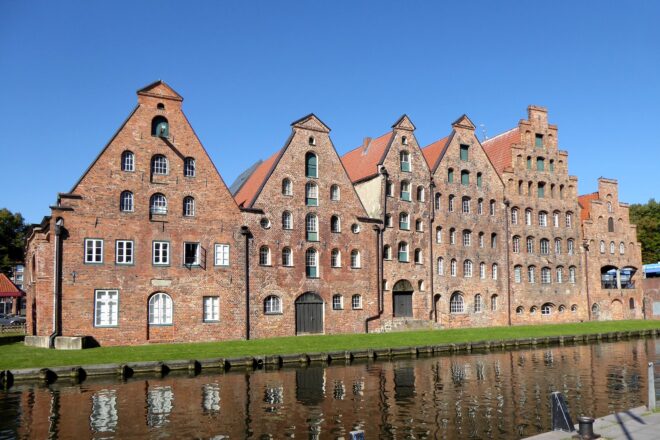 Salt Storage Houses from Across the River
Salt Storage Houses from Across the River